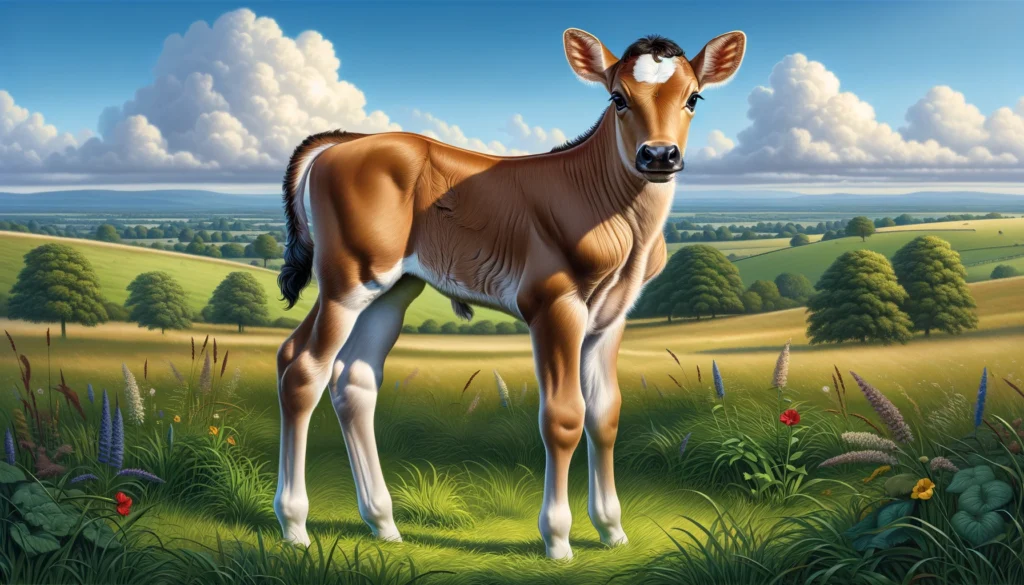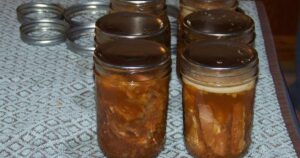
Agriculture Dictionary A vivid and detailed illustration of a yearling standing in a green pasture. The yearling has a youthful slender build with a light brown coat and wh2.webp.webp

Definition: Yearling
A yearling is a young cattle, either male or female, that is between one and two years of age. Yearlings represent a critical stage in cattle development, as they transition from calves to more mature animals, ready for breeding or further growth for beef production.
In-Depth Analysis and Applications
- Development and Growth: Yearlings undergo significant growth and development. By this stage, they have been weaned from their mother’s milk and have adapted to a diet of forage, grains, and supplements. Their growth rates are influenced by nutrition, genetics, and management practices. Yearlings typically gain substantial weight during this period, with some breeds reaching 600 to 900 pounds by the end of their first year.
- Nutrition and Feeding: Proper nutrition remains essential for yearlings to ensure continued healthy development. A balanced diet that includes high-quality forage and appropriate grain mixes is critical. Protein and energy requirements are higher for yearlings as they grow, and deficiencies can lead to stunted growth and poor health.
- Health and Veterinary Care: Regular health check-ups and vaccinations are crucial for preventing diseases and maintaining the health of yearlings. Common health issues include respiratory diseases, parasitic infections, and digestive disorders. Preventive measures, such as timely vaccinations, deworming, and maintaining clean living conditions, are vital. Yearlings should be monitored for signs of illness and receive prompt veterinary care when needed.
- Housing and Management: Yearlings require adequate space and proper housing to protect them from extreme weather conditions and ensure their well-being. They can be housed in group pens or open pastures, provided there is sufficient shelter. Good management practices, including regular handling and monitoring, help in detecting any health or behavioral issues early.
- Behavior and Social Structure: Yearlings are social animals and thrive in groups. They establish social hierarchies within their groups, which can influence their behavior and interactions. Understanding their social dynamics is important for effective management and to minimize stress-related issues.
- Breeding and Reproduction: For yearling heifers, reaching sexual maturity and preparing for their first breeding is a significant milestone. Heifers are typically bred around 15-18 months of age, depending on their development and weight. Proper management and nutrition are crucial to ensure they are healthy and ready for breeding.
- Economic Significance: Yearlings represent a valuable investment for farmers, contributing to the future productivity of both dairy and beef herds. Effective management of yearlings can lead to better milk yields and higher-quality beef. Yearlings also play a crucial role in maintaining genetic diversity within herds and ensuring the long-term sustainability of cattle operations.
- Environmental Impact: Raising yearlings has environmental implications, including methane emissions and resource use. Sustainable practices, such as rotational grazing and efficient feed management, help reduce the environmental footprint. Advances in breeding and nutrition aim to improve the sustainability of raising yearlings.
- Cultural and Societal Roles: Yearlings hold cultural significance in many societies. They are often featured in agricultural fairs, educational programs, and traditional events. In some cultures, yearlings are symbolic of growth and future prosperity. They play a role in promoting agricultural awareness and education.
- Challenges and Future Directions:
- Health Management: Ongoing advances in veterinary care and disease prevention are essential for maintaining healthy yearling populations.
- Sustainability: Developing sustainable practices for raising yearlings is crucial for the future of cattle farming.
- Genetic Improvement: Continued focus on genetic selection for traits such as growth efficiency, disease resistance, and productivity is important.
- Market Dynamics: The economic viability of raising yearlings depends on market conditions, including demand for dairy and beef products and the costs of feed and healthcare.
- Industry Trends:
- Precision Agriculture: The use of technology in monitoring and managing yearling health and growth is increasing.
- Genomics: Advances in genomics are improving the selection process for breeding yearlings with desirable traits.
- Welfare Standards: Enhanced animal welfare standards and practices are becoming more prevalent, driven by consumer demand and regulatory requirements.
- Global Trade: The trade of yearlings and genetic material across borders is contributing to global improvement in cattle herds.
Resources for Further Exploration:

Originally posted 2024-06-11 03:19:20.
Fall off the barn roof and busted your keister? Life on the farm or ranch can be tough on the bum. Need a break? Laugh it off at FarmerCowboy.com, the #1 farm humor site. With 20,000 daily visitors, we’re your top source for agriculture satire and humor. Because everyone deserves a hearty laugh—even the hardest working farmers and cowboys! Join us and turn those long days into fun tales at FarmerCowboy.com.
Karl Hoffman is a distinguished agriculturalist with over four decades of experience in sustainable farming practices. He holds a Ph.D. in Agronomy from Cornell University and has made significant contributions as a professor at Iowa State University. Hoffman’s groundbreaking research on integrated pest management and soil health has revolutionized modern agriculture. As a respected farm journalist, his column “Field Notes with Karl Hoffman” and his blog “The Modern Farmer” provide insightful, practical advice to a global audience. Hoffman’s work with the USDA and the United Nations FAO has enhanced food security worldwide. His awards include the USDA’s Distinguished Service Award and the World Food Prize, reflecting his profound impact on agriculture and sustainability.






